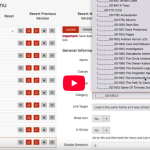
October 7,2021
Communicating on Social Media Part 2: The Tactics

In the previous blog, I looked at the 4 main elements of the strategy for social media which included research, setting goals, involvement and measurement. In this blog, I’ll look at the tactics of communicating on social media, including:
- The Audience
- The Channels
- The Content
- The Matrix
The Audience:
Following on from the research – you need to understand your audience. This is the same across all channels, but on social media, it may be more measurable and informative. I was reading a book by Liani Li who has an interesting take on social media personalities. Her theory is that there are a number of different personalities to consider when creating social media tactics:
- Creators: Active on blogs & forums. Active creators of content who are influential and can make great allies.
- Critics: Active on all channels. Need to be heard, and you should spend time getting to know / interact with them as they can be influential and good allies. They have strong opinions and are not afraid to share. Don’t mistake them for “trouble-makers” as it’s not the same thing.
- Collectors: Like to share and they can be influential. They gather information and form their own opinions. These people can be influenced by others.
- Joiners: Join communities (i.e. Facebook, forums, message boards etc..) as they like / need to have sense of belonging. They hold conversations are sociable people with a need to connect – they too can be influenced.
- Spectators: Like to watch but don’t join in, they read ratings and reviews and create their own conclusions. Can be highly influenced by others opinions, but don’t necessarily share their own. Rarely influence others, but active on social channels (to spectate).
- Inactives: no interest in social media, do not participate, do not consider this important. Businesses need to consider other methods of communicating with these people.
My opinion is that in reality, people can be a combination of those personalities if you consider the different channels and how people use them. Looking at my own use and communication on social media, I would suggest I’m a “creator” on Facebook, but inactive on Tumblr, Instagram and Pinterest. I’m probably a “Collector” on Twitter and a “Joiner” on LinkedIn – at the moment!
Another point to note is that I could change my personalities on social media as time goes on, I may decide to become an Instagram user – so businesses should also keep that in mind when looking at research / measurement. Things change!
The Channels:
Consider the different channels, Facebook for example, is a community-building site, LinkedIn a more “networking” / business site, Twitter (in my opinion) a more news-related site.
Now look at how people communicate on social media through each channel – Facebook generally has more “on-page conversations”, twitter generally uses short URL’s taking users elsewhere, and there is a mass use of # and @ symbols on every other post if not every single one, content on LinkedIn is usually business-related, and the list goes on….
So, when you know your audience and where they are, consider each individual channel and how people communicate – it won’t be the same across all channels. Again, research, listening and learning are key.
The Content:
The content will largely be defined by your overall business strategy and the research you’ve done about each of the channels and audiences. Matching them is tricky, but the hard work will pay off here. Just because you want to “sell” something, doesn’t mean people want to hear it. But it is feasible they do want to hear from your business. Becoming the “Trusted advisor” on social media is usually a good tactic. Offering advice / information / expertise on relevant topics is a good way to build trust with the community and audience – but trust and respect need to be earned, it’s not given, nor should it be expected.
Listen to the audience, see what conversations they’re having, join in only if you’ve got something of value to add and don’t force your opinion. Your initial research will guide you towards the right content, but it’s important you listen. As previously mentioned, people don’t go on social media to be marketed to, but they will engage and share with businesses as long as it’s in their interests to do so. Social media is their space, not yours, they decide who, when, what and where – you don’t.
The Matrix
Looking at just those topics, you can see why social media isn’t quick, cheap or easy. In reality, it’s a very complex matrix – even before businesses add in their needs. Plus, it’s only one channel in a wide array of choices to communicate with your audience. If budgets and resources are restricted, how do you decide between social media and other channels such as direct mail, email marketing, advertising, SEO, PPC. Well, that’s not something I can answer for everyone, it’s a business specific answer, but hopefully this blog and the previous one will help businesses think about their social media activity.
Summary and Soundbites:
- It’s not easy, quick or cheap (research, create a plan, involve the business, measure, adapt and repeat).
- Consider Return on Conversation (Not Return on Investment).
- Understanding your audience is vital.
- Remember: it’s their space, not yours.
- Don’t be afraid of the negative (create a plan of action / anticipate and learn).
- Understand each community (learn “unwritten rules”, no-one likes spammers. Listen).
- Build relationships through good content and thought leadership.
- Engagement is about quality, not quantity.
- Don’t have expectations from the community (you have to earn their trust and respect).
- Listen, learn & adapt (measure).
- People / communities WANT to share (but remember, they’re selective about their sharing and can often have behind the scenes conversation).
- Don’t force opinions – yours or theirs.
If you ever need any help with your social media marketing, why not call us on 01952 897 444, or contact us here.




